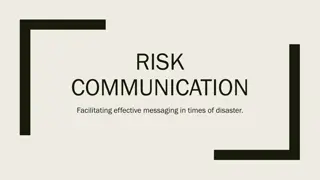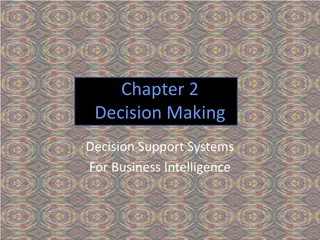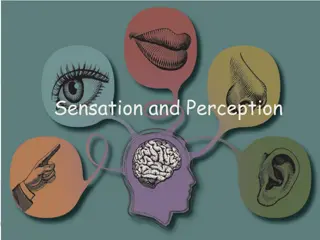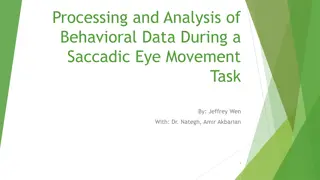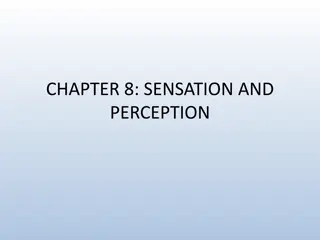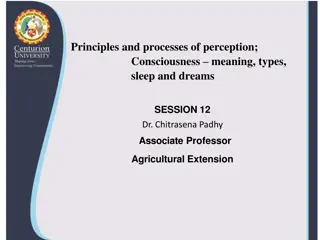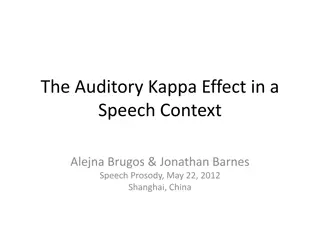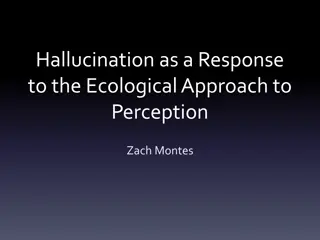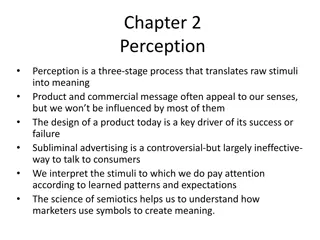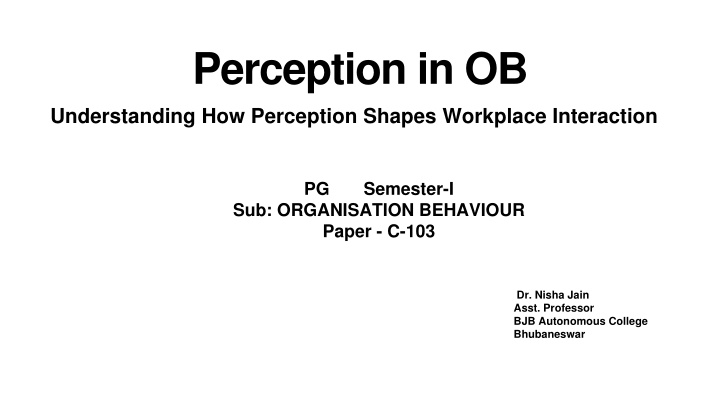
Workplace Interaction Through Perception in Organisational Behaviour
Explore the significance of perception in shaping workplace dynamics and interactions in Organisational Behaviour. Learn about the concept, features, factors influencing perception, and the perceptual process including selection, organization, interpretation, and response. Understand how perceptual organization enables individuals to make sense of their environment within organizations using Gestalt Principles of Perception.
Download Presentation

Please find below an Image/Link to download the presentation.
The content on the website is provided AS IS for your information and personal use only. It may not be sold, licensed, or shared on other websites without obtaining consent from the author. If you encounter any issues during the download, it is possible that the publisher has removed the file from their server.
You are allowed to download the files provided on this website for personal or commercial use, subject to the condition that they are used lawfully. All files are the property of their respective owners.
The content on the website is provided AS IS for your information and personal use only. It may not be sold, licensed, or shared on other websites without obtaining consent from the author.
E N D
Presentation Transcript
Perception in OB Understanding How Perception Shapes Workplace Interaction PG Semester-I Sub: ORGANISATION BEHAVIOUR Paper - C-103 Dr. Nisha Jain Asst. Professor BJB Autonomous College Bhubaneswar
Introduction to Perception Concept of Perception: Perception refers to the process by which individuals interpret and organize sensory information to give meaning to their environment. In the context of Organisational Behaviour (OB), perception plays a crucial role in determining how employees interact with one another, how they make decisions, and how they form judgments about workplace events. Understanding perception is key to improving communication and teamwork within organisations.
Features of Perception: Perception is an intellectual process Perception is the basic cognitive or psychological process. Perception is distinct from sensation Perception is a subjective process
Factors influencing Perception: Internal Factors: Attitudes Past Experiences Personality External Factors: Social context Environmental stimuli
The Perceptual Process: Stages: 1. Perceptual Input: Everything that contributes to the occurrence of events. 2. Selection: After receiving the stimuli from the environment, some are selected for further processing while others are screened out. 3. Organization: After the Stimuli are received these are organised in some form in order to make sense out of that. Various forms of organising stimuli are Figure-ground, grouping, simplification and Closure 4. Interpretation: People interpret the meaning of what they have selectively perceived and organised interns of their own assumptions of people things and situations. 5. Response/ Perceptual output: Based on this perception, individuals respond with thoughts, feelings, or actions.
Perceptual Organisation: Perceptual organisation refers to the process by which individuals organise sensory inputs into meaningful patterns and wholes, allowing them to make sense of the complex world around them. It is a critical phase in the broader perceptual process, where individuals interpret and give structure to the stimuli they receive through their senses. In Organisational Behaviour (OB), understanding perceptual organisation helps explain how employees perceive and categorize workplace situations, colleagues, and tasks, shaping their reactions and decisions Perceptual organization can be understood through several principles, often referred to as Gestalt Principles of Perception. These principles explain how the brain tends to group and interpret visual information as patterns, shapes, or organized wholes rather than as disjointed parts.
Figure- Ground Principle : This principle refers to how people differentiate between the figure (the object of focus) and the ground (the background). In any given situation, individuals naturally separate key elements from their surrounding context. For example, in a workplace meeting, a manager giving a presentation would be the figure while the setting, such as the room and people in the background, would form the ground. This helps employees focus on important details, filtering out less relevant information.
2. Principle of Proximity Objects that are close to one another tend to be grouped together in perception. In the workplace, proximity influences how individuals perceive relationships between coworkers, tasks, or departments. Employees who sit near each other or collaborate on similar tasks may be perceived as belonging to the same team, even if their roles differ. This perceptual grouping can affect teamwork and how employees form associations with others.
Principle of Similarity Items that are similar in shape, color, size, or other attributes are grouped together as part of a pattern. Similarity is an important principle in organizational settings, where employees may categorize coworkers based on shared characteristics such as job roles, attitudes, or even attire. For instance, employees from a particular department may be perceived as having similar skills or values, even if they are unique individuals. This can lead to assumptions and stereotypes, influencing how people collaborate or interact.
Principle of Closure The brain tends to fill in gaps in incomplete information to form a complete, whole image. In the workplace, employees often make judgments or decisions based on incomplete information, filling in the gaps with assumptions or past experiences. For instance, if a manager receives partial feedback about an employee s performance, they may form a complete impression by assuming certain characteristics that weren t explicitly mentioned. While this helps individuals make quick decisions, it can also lead to errors in judgment if the assumptions are inaccurate.
Perceptual Biases: Perception is often subject to biases that can distort reality. Halo Effect: The halo effect occurs when one positive characteristic of an individual leads to an overall favourable impression. Stereotyping:Stereotyping involves assigning traits to someone based on group membership rather than individual merit. Selective Perception: Selective perception means noticing only certain aspects of a situation that align with one s beliefs Projection:Projectioninvolves attributing one s own thoughts or emotions to someone else. These biases can affect decision-making, communication, and leadership in organizations.

